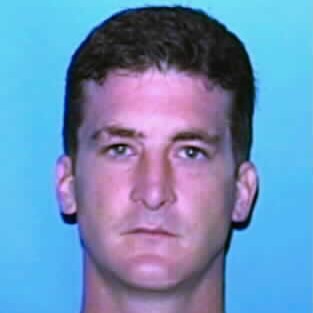
1970 - 2013
Steven Ray Thacker
Summary
Name:
Years Active:
1999 - 2000Birth:
November 21, 1970Status:
ExecutedClass:
Serial KillerVictims:
3Method:
Stabbing / StrangulationDeath:
March 12, 2013Nationality:
USA
1970 - 2013
Steven Ray Thacker
Summary: Serial Killer
Name:
Steven Ray ThackerStatus:
ExecutedVictims:
3Method:
Stabbing / StrangulationNationality:
USABirth:
November 21, 1970Death:
March 12, 2013Years Active:
1999 - 2000Date Convicted:
February 6, 2002bio
Steven Ray Thacker was born on November 21, 1970 in the United States. He grew up in circumstances marked by financial instability and struggled through adulthood with employment and personal problems. Reports later indicated that Thacker battled issues of depression, compulsive behavior, and financial hardship, which played into his descent toward violent crime. By the late 1990s, Thacker’s personal life was deteriorating. He was married and had a son, but his marriage was strained.
murder story
On December 23, 1999, in Bixby, Oklahoma, Steven Ray Thacker set into motion the first killing of his multi-state spree. His victim, 25-year-old Laci Dawn Hill, had placed an advertisement to sell a pool table, and Thacker responded to it. While the meeting was arranged under the guise of a simple transaction, Thacker’s true motive was robbery.
Once inside Hill’s home, Thacker produced a knife and held her at knifepoint. Hill attempted to calm the situation and even suggested retrieving money from a nearby ATM, but Thacker instead forced her to leave her home. He kidnapped her and drove to a remote cabin outside of town.
At the cabin, Thacker sexually assaulted Hill, then decided she could not be allowed to live. Fearing she would identify him to police, he strangled her using his hands and possibly a piece of cloth. Not satisfied that she was dead, Thacker plunged his knife into her chest twice, piercing her vital organs and killing her.
After the murder, Thacker attempted to conceal Hill’s body by covering it with old box springs and mattresses. He then took her credit and debit cards, using them to purchase Christmas presents for his family. These transactions would later help investigators link him to the crime.
Six days later, on December 29, 1999, police discovered Hill’s body in the abandoned cabin. Her death shocked the local community. The investigation quickly revealed that her cards had been used after her disappearance, and Thacker became the prime suspect. By then, however, he had already fled Oklahoma in a stolen vehicle.
After killing Hill, Thacker drove north into Missouri, evading police in Oklahoma. He spent several days hiding in wooded areas, sleeping outdoors, and burglarizing unoccupied homes for supplies. He narrowly escaped capture more than once as law enforcement across state lines joined in the manhunt.
On January 1, 2000, Thacker broke into the home of 24-year-old Forrest Reed Boyd, a restaurant supervisor living in Aldrich, Missouri. Boyd returned home unexpectedly while Thacker was still inside, and a confrontation followed. Unwilling to leave a witness, Thacker attacked Boyd, stabbing him multiple times until he collapsed and died.
Thacker then stole Boyd’s vehicle and credit cards, repeating the same pattern of theft and flight that had followed Hill’s murder. His movement into yet another state escalated the urgency of the manhunt, with police in Oklahoma, Missouri, and now Tennessee searching for him.
Boyd’s murder further demonstrated Thacker’s willingness to kill anyone who threatened his ability to remain free. He had no prior connection to Boyd, who was targeted solely because he came home at the wrong moment.
On January 2, 2000, just one day after Boyd’s death, Thacker crossed into Tennessee driving Boyd’s stolen car. The vehicle broke down near Dyersburg, leaving Thacker stranded. Seeking help, he called for a tow.
The responding driver was 52-year-old Ray Patterson, a tow truck operator. Patterson arrived at the roadside scene and began assisting Thacker. When it came time to pay, Thacker attempted to use one of Boyd’s stolen credit cards. Patterson quickly realized the card was invalid and suspected it had been stolen. When he confronted Thacker, the fugitive lashed out violently.
Thacker stabbed Patterson multiple times, killing him on the roadside. With his third murder in just eleven days, the spree now stretched across three states.
Afterward, Thacker fled once again. He checked into a motel in Union City, Tennessee, using an alias. He attempted to keep a low profile, but the plan quickly collapsed. Authorities, already aware of the stolen vehicle, discovered Boyd’s car parked outside the motel. Police stormed the room and arrested Thacker without further violence. His capture on the same day as Patterson’s murder brought an end to his ten-day spree.
Following his arrest, Thacker faced an unusual situation: he had committed three murders in three states, including Oklahoma, Missouri, and Tennessee, each with separate laws and prosecutorial jurisdictions.
Each state wanted to ensure its victim received justice, and Thacker accumulated two death sentences and one life sentence for his crimes.
Thacker spent more than a decade on death row, filing appeals in both Oklahoma and Tennessee. He argued ineffective counsel, constitutional violations, and disproportionate punishment, but every appeal was denied. By 2012, both state and federal courts had rejected his cases.
On January 7, 2013, the Oklahoma Attorney General requested an execution date, which the courts approved for March 12, 2013. Thacker was transferred from Tennessee to Oklahoma State Penitentiary in McAlester, where the sentence would be carried out.
Thacker waived his right to a clemency hearing, accepting that his execution would proceed. On March 12, 2013, at the age of 42, he was executed by lethal injection. In his last words, he apologized to the families of his three victims and asked for forgiveness. For his final meal, Thacker requested a meat lover’s pizza, a bag of peanut M&Ms, and an A&W root beer.